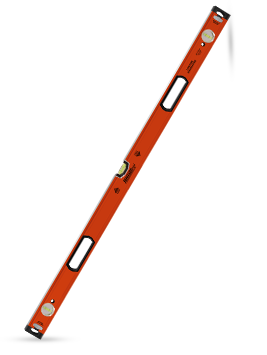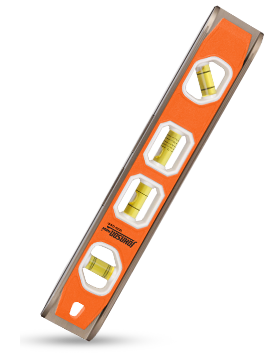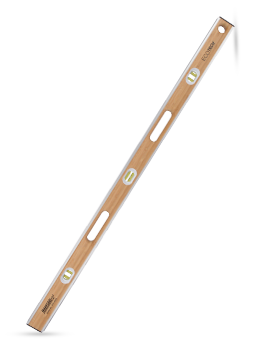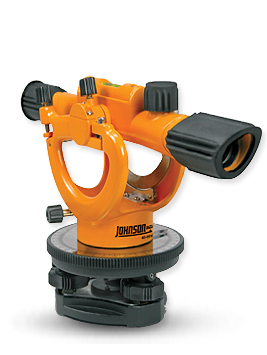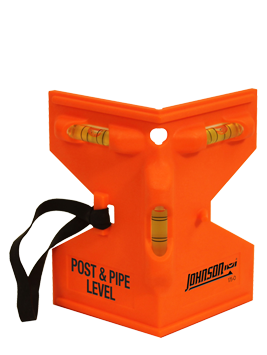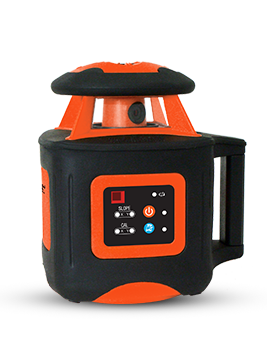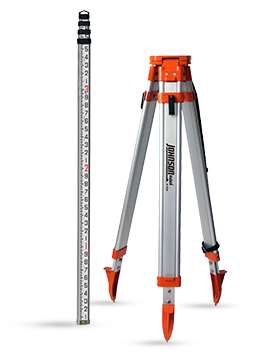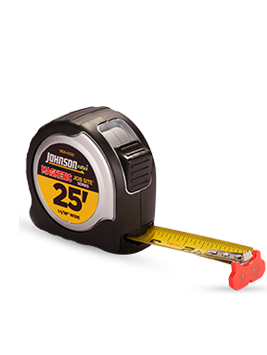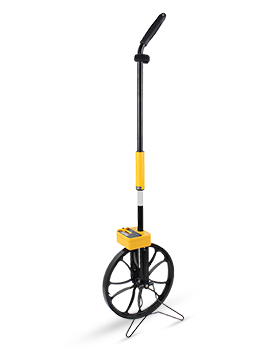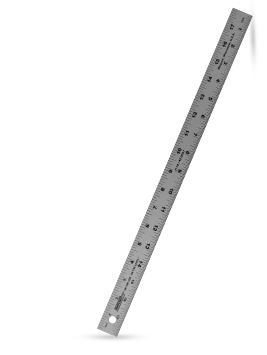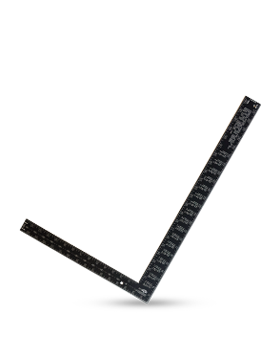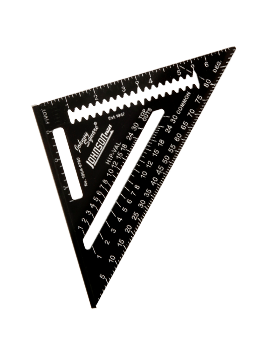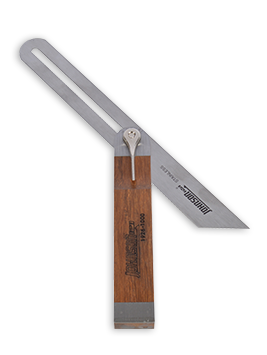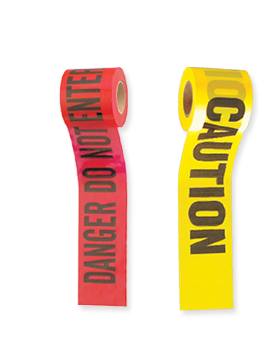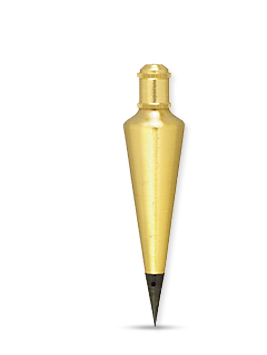History of the Level - How the Bubble Level Began
Although the spirit level or bubble level is relatively new considering the history of man, the concept of level and plumb, or a tool that levels, has been around for ages.
Ancient Egypt
Ancient Egypt was one of the first civilizations to have solved many problems of construction as evidenced by the Great Pyramids at Giza. Specifically, when it came to construction, the leveling problems facing the Egyptians were:
-
Leveling a coarse stone horizontally to make room for another stone to be added on top (the stone had to be level on top and bottom)
-
Plumbing the side wall of the stone to fit appropriately next to another stone (the stone had to be straight up and down).
 The solution was a simple "A" frame structure, most likely made of wood. From the top of the "A" frame was a string attached to the center of the top of the "A". A weight was placed on the other end of the string so when gravity took over, the string would hang plumb or straight down. To make seeing plumb easier, a vertical marking or notching out of the wood near where the string was fixed to the frame, would indicate when the string is sitting straight down, or plumb.
The solution was a simple "A" frame structure, most likely made of wood. From the top of the "A" frame was a string attached to the center of the top of the "A". A weight was placed on the other end of the string so when gravity took over, the string would hang plumb or straight down. To make seeing plumb easier, a vertical marking or notching out of the wood near where the string was fixed to the frame, would indicate when the string is sitting straight down, or plumb.
In use, when the "A" frame sits flat on a surface, the weight on the string hangs down straight as measured by the vertical marking, but if the string falls off-center, an adjustment would have been needed. The limitation of this level and plumb rule, like the spirit level of today, is its size. You can only measure level the span of the legs of the "A" frame, therefore, to measure over a greater distance, several measurements side by side would need to be made.
Essentially, what the Egyptians, and later the Romans, used was a combination of a plumb bob with a span to view "level". The key to constructing this simple mason's level would have been the precise construction of symmetry of the "A" frame tool and the perpendicular of each leg of the frame to the plumb bob, in particular, the "square" or 90-degree angle of the top of the "A" frame, which can be accomplished using both geometry and the stars on the horizon for alignment (another ancient Egyptian mathematical and astrological genius). The bottom surface of the legs of the "A" that rested on the rock must also be parallel with the frame and even across. The area of the level touching the area being leveled is what we call today the "gauging edge" of the level.
Medieval Masonry
Masonry 1,000 years ago also relied on the concept of plumb to find level. However, the medieval level made an advancement over its Egyptians and Roman predessor.
 In the thirteenth century, there is pictorial evidence of a level which was essentially a straight-edge (typically a long wooden board) with a raised semi-circle in the middle of the top edge where a string hung down with a plumb bob attached. The string would be long enough to hang below the bottom of the level. A fifteenth century picture also shows a similar level, except instead of a semi-circle at the top, there was a vertical board (parallel with the bottom board.
In the thirteenth century, there is pictorial evidence of a level which was essentially a straight-edge (typically a long wooden board) with a raised semi-circle in the middle of the top edge where a string hung down with a plumb bob attached. The string would be long enough to hang below the bottom of the level. A fifteenth century picture also shows a similar level, except instead of a semi-circle at the top, there was a vertical board (parallel with the bottom board.
The reason this tool was an advancement over the ancient tool was that technically, level could only be verified in the ancient tool by comparing the points at which the legs of the "A" frame rested. With the medieval tool, the levelness of the masonry could be checked along the entire length of the board (the level). When working with smaller stones and a larger level, several stones could be checked for level at once, providing a time advantage and greater accuracy.
©2010 Johnson Level & Tool Mfg. Co., Inc.
This article was written based on: Medieval Masons' Tools: The Level and the Plumb Rule Author(s): Lonnie R. Shelby Source: Technology and Culture, Vol. 2, No. 2 (Spring, 1961), pp. 127-130 Published by: The Johns Hopkins University Press on behalf of the Society for the History of Technology

